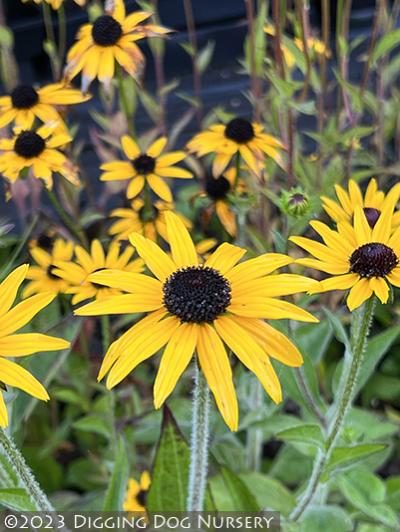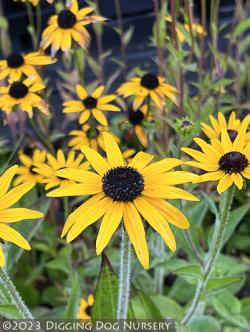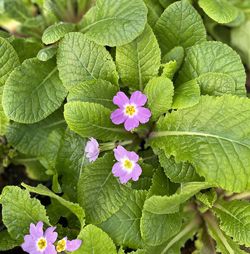Deam’s Black-Eyed Susan

Rudbeckia
Black-Eyed Susan
Named by Linnaeus in honor of his teacher Olaf Rudbeck, this North American genus includes 25 to 30 species, many of them famous summer and late season bloomers. These easily grown selections promise to brighten borders and naturalized meadows plus make dandy additions to bouquets. Offering late fall and winter interest, they combine well with Asters, Eupatoriums and grasses.

A resilient central and southeastern U.S. native, this undemanding queen of yellow wields her scepter over the late season garden. Each glorious, large golden disc hosts a pronounced velvety dark chocolate center and 12 to 21 ebullient rays. Crowning strong, branched upright stems and hairy, oblong thick dark green leaves, the intriguing pointed green calyces unfurl a profuse sunny gala that entrances butterflies, song birds, florists and plant enthusiasts. Adaptable Deam’s Black-Eyed Susan can be added to stylized meadows, perennial borders and cottage gardens, where she thwarts pests and tolerates occasional drought plus clay or rocky soil.
Blooms July–September
Size: 2-1/2' – 3' 0" high x 15" wide.
Hardy to zone 3.
Please fill out our Registration Form to receive news of updates to the web site, availability of new plants, give us your feedback, and to be on the mailing list to receive future printed catalogs.
Other selections in this genus:
- Rudbeckia ‘American Gold Rush’
- Rudbeckia fulgida speciosa (Newmanii)
- Rudbeckia fulgida ‘Swiss Gold’
- Rudbeckia fulgida var. speciosa ‘Viettes Little Suzy’
- Rudbeckia grandiflora ‘Sundance’
- Rudbeckia laciniata ‘Goldquelle’
- Rudbeckia occidentalis ‘Green Wizard’
- Rudbeckia paniculata
- Rudbeckia subtomentosa
- Rudbeckia subtomentosa ‘Loofahsa Wheaten Gold’
- Rudbeckia triloba ‘Prairie Glow’










